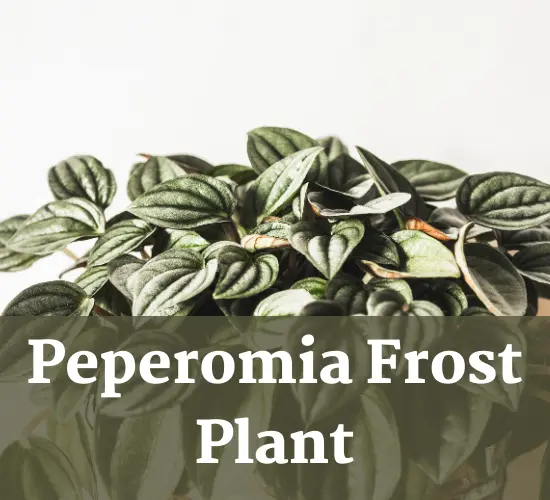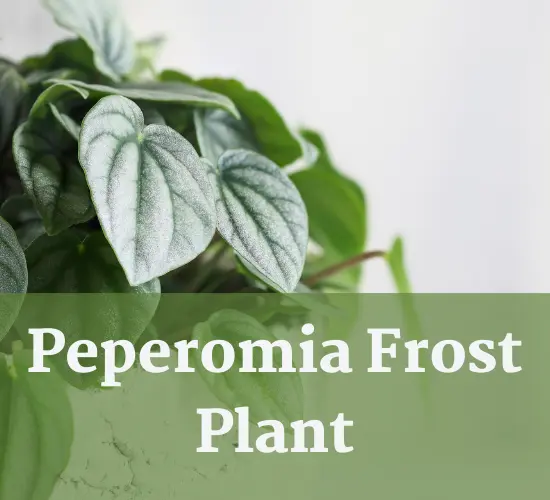Table of Contents
Peperomia Frost Care
Peperomia Frost plants, with their stunning foliage and low-maintenance requirements, have become a favorite choice for houseplant enthusiasts.
Like a gentle breeze on a warm summer day, these plants bring a sense of tranquility and beauty to any indoor space.
In this article, we will delve into the essential tips and techniques for Peperomia Frost care, equipping you with the knowledge needed to ensure your plants thrive and flourish.
To successfully care for peperomia houseplants, it is crucial to understand their specific needs in terms of watering, humidity, temperature, propagation, and lighting.
By providing the right amount of water, avoiding extremes in humidity and temperature, and offering adequate lighting, you can create a favorable environment for your peperomia plants to grow and thrive.
Additionally, we will explore the various methods of propagation, allowing you to expand your collection and share the joy of peperomia care with others.
Furthermore, we will discuss the non-toxic nature of certain peperomia varieties, making them a safe and worry-free choice for households with pets and children.
With this comprehensive guide, both beginners and experienced plant parents can feel confident in their ability to care for their peperomia houseplants and enjoy the freedom that comes with nurturing these beautiful plants.
Peperomia Watering

Watering is an important aspect of peperomia care, and it is recommended to water the plants when 50%-75% of the soil volume is dry. This allows the roots to receive adequate moisture without becoming waterlogged. Overwatering can lead to root rot and other issues, so it is crucial to avoid keeping the soil constantly wet.
Additionally, it is important to discard any accumulated water in the saucer to prevent the roots from sitting in standing water, which can also lead to root rot.
When it comes to peperomia watering techniques, it’s important to strike a balance. While peperomias appreciate slightly moist soil, they do not thrive in constantly wet conditions. One common mistake in peperomia watering is overwatering, which can lead to root rot. It’s important to allow the soil to dry out between waterings to prevent this issue.
On the other hand, underwatering can also be detrimental to peperomias. It’s important to monitor the soil moisture and water the plants when the top inch or so of the soil feels dry.
By following these watering guidelines and avoiding common mistakes, peperomias can thrive and remain healthy.
Humidity and Temperature

Humidity and temperature are important factors to consider for the healthy growth of peperomia plants. Peperomias generally do well at average household humidity levels. However, they can benefit from occasional humidity boosts, especially in very dry air conditions. Providing added humidity can be done through various methods, such as using a humidifier, misting the plant, or placing a pebble tray filled with water near the plant.
These measures help to create a more favorable environment for the peperomia, as they are native to tropical regions and are accustomed to higher humidity levels.
In addition to humidity, temperature also plays a crucial role in peperomial health. Most peperomia varieties prefer average room temperatures ranging between 65-75°F. However, it is important to note that Trailing Jade Peperomia has a wider temperature range of 60–80 °F. Extreme variations in temperature can have a negative impact on the plant’s growth and overall health. It is best to avoid exposing peperomias to drastic temperature changes, as this can cause stress and lead to leaf drop or stunted growth.
By providing the optimal temperature range for peperomias, along with adequate humidity levels, you can ensure their well-being and promote thriving growth.
Propagation and Light
Propagation of Peperomia plants can be easily accomplished through leaf or stem cuttings, allowing for the expansion of their green presence with minimal effort.
Leaf cuttings can be taken by carefully removing a healthy leaf from the plant, making sure to include a short section of the stem. The leaf should be placed in a small pot filled with well-draining soil mix, ensuring that the stem is inserted into the soil and the leaf is left above the surface. It is important to keep the soil slightly moist while the cutting establishes roots, which usually takes a few weeks.
Stem cuttings, on the other hand, can be taken by selecting a healthy stem with a few leaves and making a clean cut just below a leaf node. The cutting should be planted in a pot filled with moist soil mix and kept in a warm and bright location. After a few weeks, roots will start to develop, and the cutting can be treated as a mature plant.
When it comes to light requirements, peperomia plants have specific preferences depending on the variety.
Most peperomias thrive in low- to indirect-light conditions, making them suitable for indoor spaces with limited natural light. Placing them near a window with a sheer curtain or in a well-lit room away from direct sunlight is ideal.
However, trailing peperomias, such as the Trailing Jade, prefer medium to bright indirect light. This means they can tolerate slightly brighter conditions compared to other peperomia varieties.
It is important to avoid exposing peperomias to intense sunlight, as this can lead to sunburn and damage the foliage.
By providing the appropriate amount of light, peperomia plants will grow and flourish, adding a touch of natural beauty to any indoor setting.
Read about other indoor plants
Frequently Asked Questions
Can I use tap water to water my peperomia?
Tap water can be used to water peperomia, but filtered water is preferred as it reduces the risk of mineral buildup. Rainwater is also beneficial as it is free from chemicals and minerals found in tap water.
Can I place my peperomia near an air conditioner or heater?
Placing a peperomia near an air conditioner or heater can have negative effects on the plant due to extreme temperature fluctuations. It is best to avoid direct exposure and maintain a stable temperature. Using filtered water benefits Peperomia by preventing the buildup of harmful minerals and chemicals.
How long does it take for Peperomia leaf cuttings to root?
Peperomia leaf cuttings typically take around 2–4 weeks to root. When watering, it is recommended to use filtered or distilled water instead of tap water to avoid mineral buildup. Peperomia prefers average household humidity and should not be placed near temperature sources or kept outdoors in direct sunlight.
Can I keep my peperomia outdoors in direct sunlight?
Peperomia is best kept indoors as it thrives in low to indirect light. Direct sunlight can burn its foliage. Understanding the best light conditions for peperomia is crucial for its growth and overall health.
2 thoughts on “Peperomia Frost Care: Tips For Thriving Houseplants”